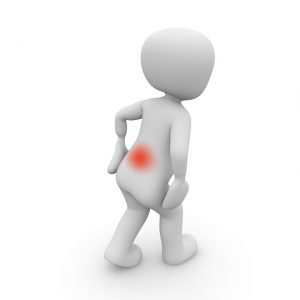 According to the Institute of Medicine of The National Academies, there are 100 million people in the US suffering from chronic back pain. This should be a frightening figure for anyone who works with workers compensation because many jobs require long hours of sitting in chairs that may or may not be providing the right ergonomic support. While the odds aren’t great, there are things you can do to improve the overall safety in the workplace. Here are some ways to combat the chances of having unnecessary claims filed for chronic back pain.
According to the Institute of Medicine of The National Academies, there are 100 million people in the US suffering from chronic back pain. This should be a frightening figure for anyone who works with workers compensation because many jobs require long hours of sitting in chairs that may or may not be providing the right ergonomic support. While the odds aren’t great, there are things you can do to improve the overall safety in the workplace. Here are some ways to combat the chances of having unnecessary claims filed for chronic back pain.
- Start Making Exercise a Part of Your Day
Wal-Mart famously did this by having workers do calisthenics before their shift started. Maybe it seemed too little silly for more professional organizations to adopt the practice, but you certainly won’t find it in most offices. However, just incorporating it into the morning routine could do wonders for productivity and overall worker satisfaction. Basic stretching or even a few lunges will suffice for increasing worker awareness about their back when sitting as well as strengthen the muscles. It also could encourage otherwise sedentary employees to be more active throughout the day.
- Post Signs and Send Out Memos
It doesn’t take very long to do, and again, gets workers to remember that their bodies need to be taken care of are as they work through their daily list of tasks. Let them know the proper posture (back and neck straight and taut) that’s best for warding off this dreaded condition. When people are cognizant of what they’re doing throughout the day, it can encourage better habits that then become second nature. For those who work in a more active environment, caution against workers taking shortcuts such as lifting items with their back.
- Offer Choices In Their Environment
Investing in the proper chairs is far cheaper than potentially paying out for a workers comp claim or having your insurance premiums raised. Quality chairs can last for years when treated properly, and are smarter choices than their cheaper counterparts. Chair backs should have an angle of 10 degrees while providing support for the small of the back and hips. Feet should be flat on the floor and elbows should be at a 90 degree angle to the desk. You may also want to offer ergonomics balls or stand-up keyboards. These can be morale savers in an office environment for people who want options. Many companies are offering cash incentives too for employees who manage to stay active which is an important part of avoiding chronic back pain. Overweight people are far more susceptible to developing back pain, so encouraging overall wellness in your employees is imperative.





